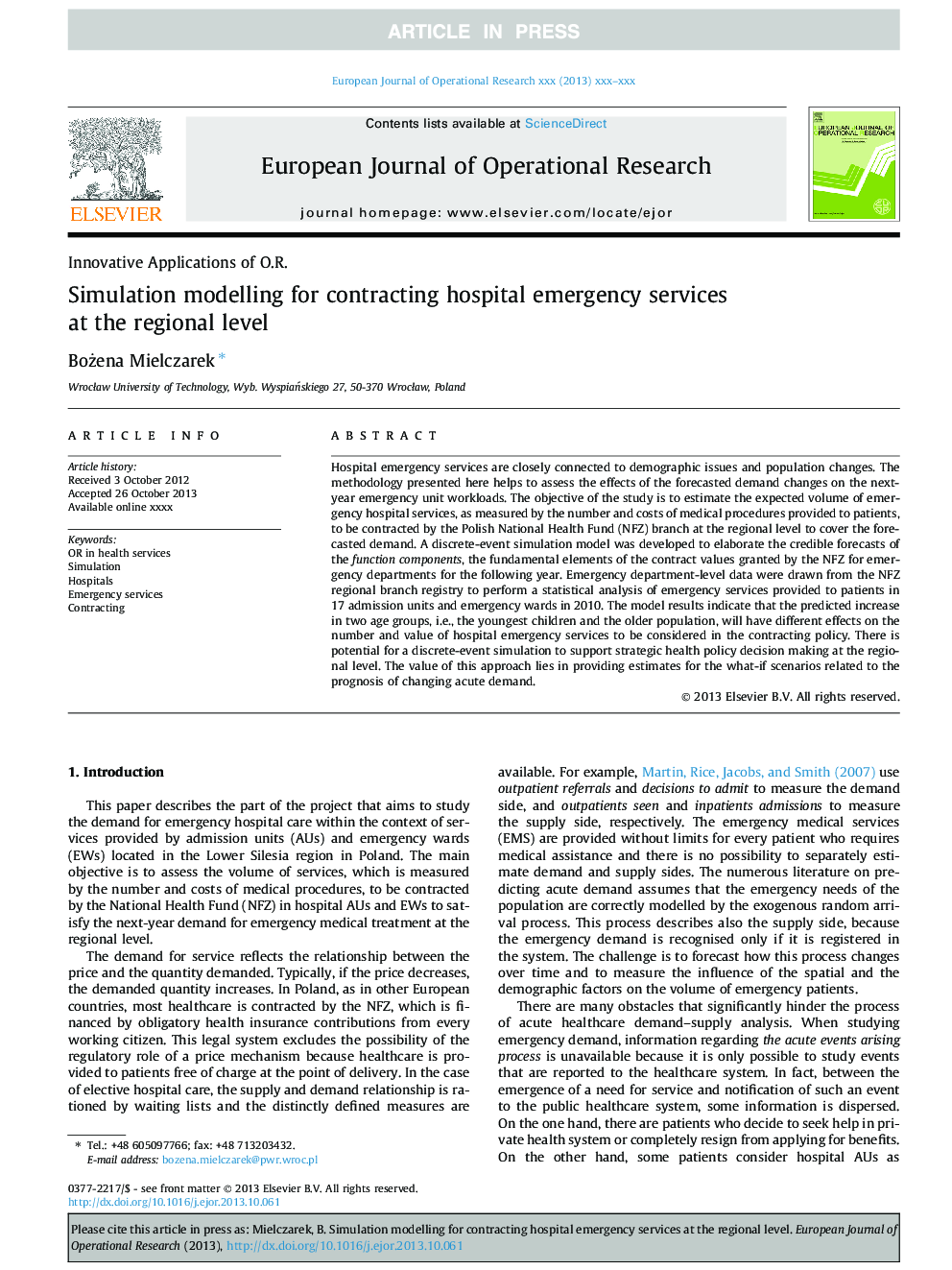| Article ID | Journal | Published Year | Pages | File Type |
|---|---|---|---|---|
| 6897641 | European Journal of Operational Research | 2014 | 13 Pages |
Abstract
Hospital emergency services are closely connected to demographic issues and population changes. The methodology presented here helps to assess the effects of the forecasted demand changes on the next-year emergency unit workloads. The objective of the study is to estimate the expected volume of emergency hospital services, as measured by the number and costs of medical procedures provided to patients, to be contracted by the Polish National Health Fund (NFZ) branch at the regional level to cover the forecasted demand. A discrete-event simulation model was developed to elaborate the credible forecasts of the function components, the fundamental elements of the contract values granted by the NFZ for emergency departments for the following year. Emergency department-level data were drawn from the NFZ regional branch registry to perform a statistical analysis of emergency services provided to patients in 17 admission units and emergency wards in 2010. The model results indicate that the predicted increase in two age groups, i.e., the youngest children and the older population, will have different effects on the number and value of hospital emergency services to be considered in the contracting policy. There is potential for a discrete-event simulation to support strategic health policy decision making at the regional level. The value of this approach lies in providing estimates for the what-if scenarios related to the prognosis of changing acute demand.
Related Topics
Physical Sciences and Engineering
Computer Science
Computer Science (General)
Authors
Bożena Mielczarek,
